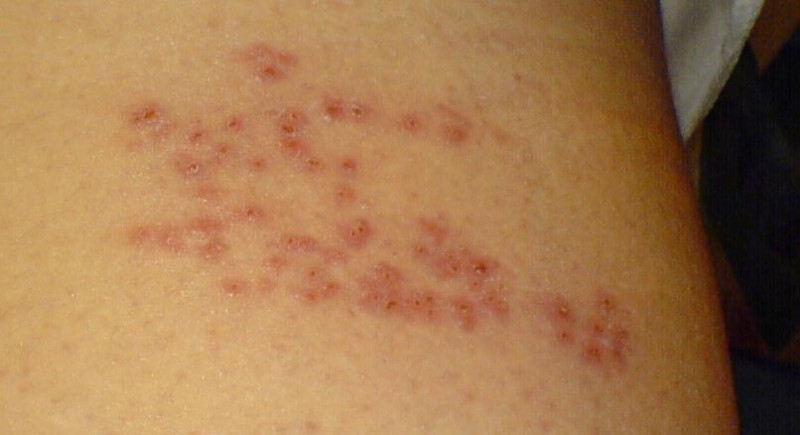
One of the hallmark signs of shingles is the development of a blistering rash. After the initial phase of pain and tingling, a distinctive red rash appears on the affected area. This rash is often accompanied by fluid-filled blisters that can be intensely itchy and painful.
The rash typically starts as red patches on the skin, resembling a rash or an insect bite. Over the next few days, these patches evolve into fluid-filled blisters. The blisters are delicate and can break easily, oozing a clear fluid. After they break, they form crusts that eventually fall off as the skin begins to heal.
The blisters and the surrounding area can be extremely sensitive, causing significant discomfort. The pain can range from a dull ache to sharp, stabbing sensations, and the itching can be relentless. This can make it difficult for individuals to focus on daily activities and can impact their overall quality of life.
If the blisters become infected due to scratching or other factors, additional medical intervention may be necessary. Infections can prolong the healing process and potentially lead to scarring.
The intense itching that accompanies the shingles rash can be incredibly bothersome. Managing this symptom is a crucial aspect of shingles treatment to improve the individual's comfort.
Applying calamine lotion or lotions containing antihistamines can provide a soothing effect, relieving the itch and minimizing the desire to scratch the affected area.
Gently placing cool, damp cloths or using ice packs on the rash can help alleviate the itching temporarily. The coolness can provide a numbing effect, giving individuals some respite from the discomfort.
Wearing loose, breathable clothing can prevent additional irritation of the rash. Tight clothing can rub against the blisters, exacerbating the itch and pain.
Shingles not only takes a physical toll but can also impact an individual emotionally and mentally. Dealing with the pain, discomfort, and potential scarring can be emotionally challenging.
Having a strong support system, including understanding family and friends, can make a significant difference. Sharing concerns and experiences can alleviate the emotional burden.
Open communication with healthcare providers about pain levels, emotional well-being, and any concerns is crucial. They can provide appropriate guidance and may suggest additional measures to manage pain and discomfort.
The blistering rash in shingles is a defining characteristic of this viral infection, causing significant discomfort and impacting an individual's daily life. Understanding its progression and finding effective ways to manage the associated pain and itching are vital aspects of shingles treatment.
Explained | Deadly Nipah virus strikes India; learn about symptoms, causes, and more